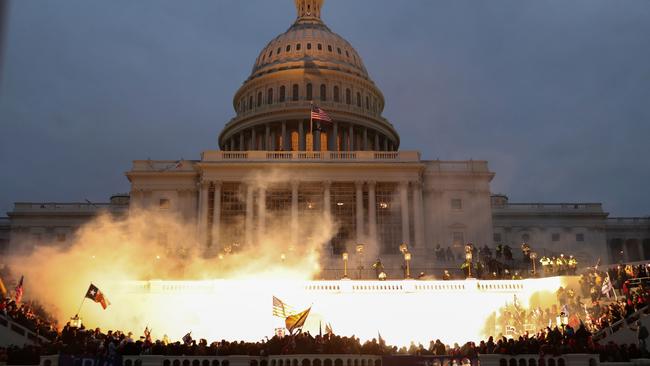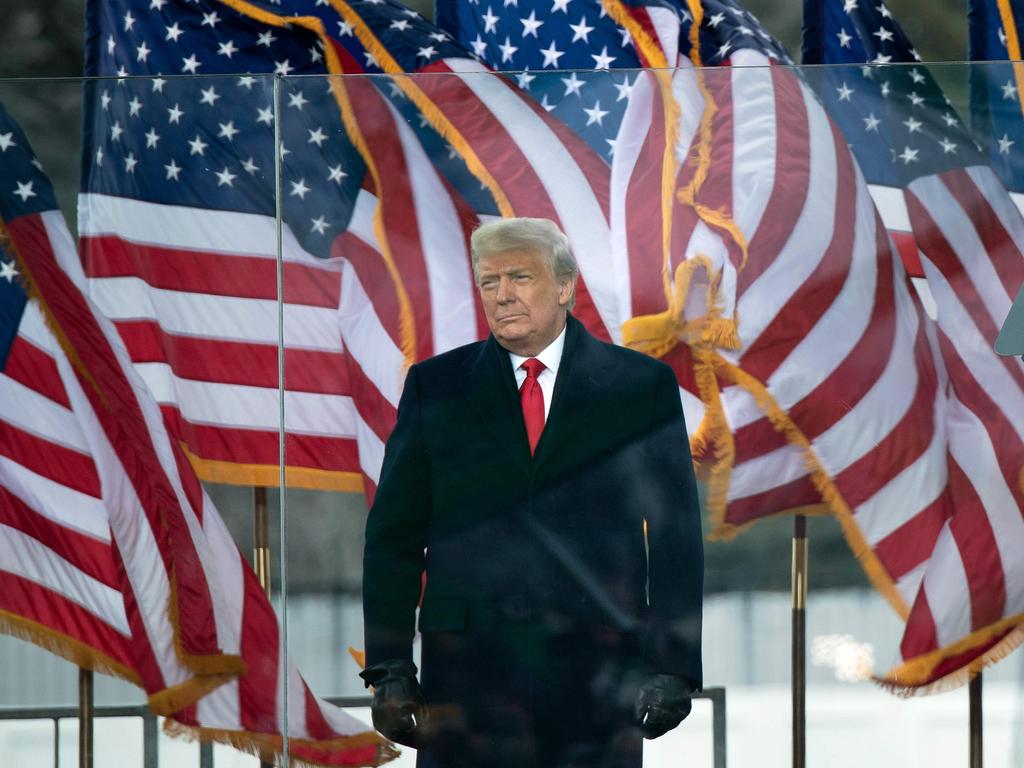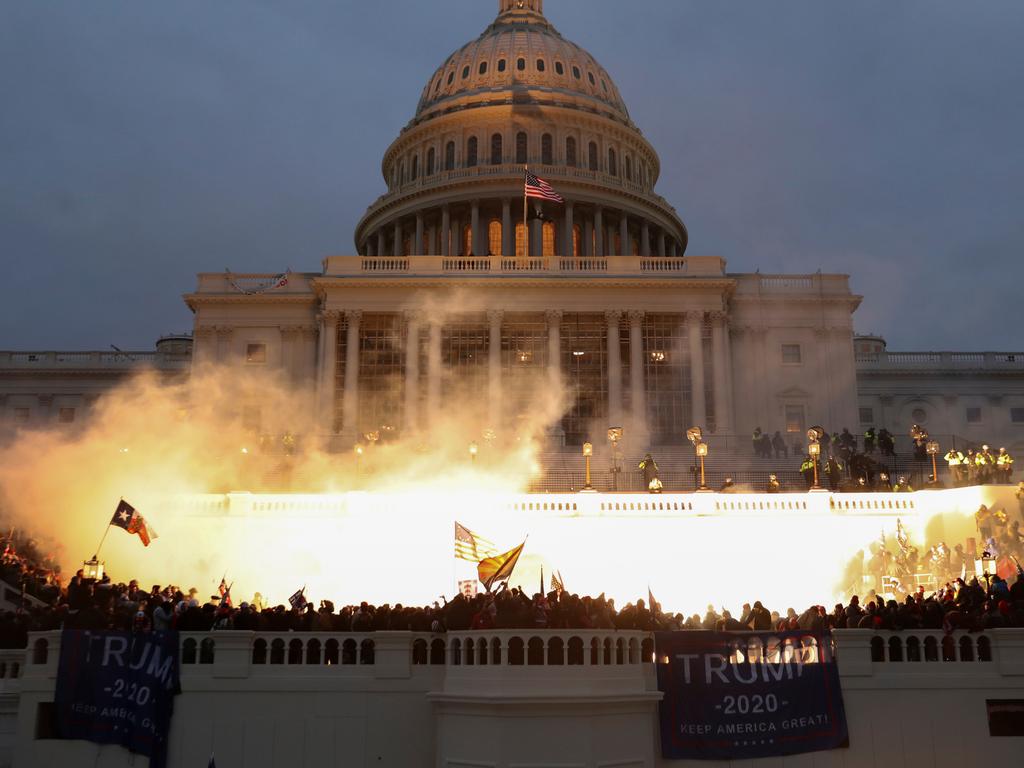
One woman, Ashli Babbitt, was killed in the afternoon, allegedly shot by police inside the Capitol building as protesters ransacked House of Representatives Speaker Nancy Pelosi’s office, rampaged through the rotunda, below the Capitol dome, broke down the door to the chamber and occupied the Senate floor.
More may be murdered overnight, since (if last year’s pattern holds) the hours of darkness — when police pull back to protect public property, protesters and counter-protesters clash, and arsonists come out of the woodwork — are the most dangerous.
But several myths also died this week. One was the complacent notion that “it can’t happen here”. On the contrary, Thursday looked a little like the opening move of a colour revolution, as seen in Ukraine, Serbia, Georgia or the Arab Spring.
Such revolutions often begin with massive peaceful protests over a contested election. These lead to violence, which triggers a government crackdown, which provokes insurrection, international condemnation and, often, regime change.
A decade ago, political scientists Philipp Kuntz and Mark Thompson noted that stolen elections — or the perception of them, which amounts to the same thing — are some of the most common triggers for revolution. Roughly 74 million people voted for Donald Trump; a mid-November Rasmussen poll suggested that 75 per cent of them believe Democrats stole the election. That’s 55.5 million people who believe a Biden administration is illegitimate; if only 3 per cent of them decided to act on that belief, that would be 1.66 million people, a sizeable base for revolt.
How things develop in the next few days, as thousands of National Guard troops and police confront Trump supporters with tear gas and flash-bangs on the streets of the capital, will shape the ultimate outcome.
But the notion of an inevitable, peaceful democratic transfer of power is dead.
Another myth that died this week was the idea of Trump supporters as a spent force. Since the election the Trump campaign has mounted four dozen lawsuits challenging the outcome. All failed. (Though, to be fair, Trump supporters point out that few were considered on their merits, with many thrown out on procedural grounds or never heard.) Likewise, many protests fizzled and a proposed truckers’ strike never happened.
But what was obvious to anyone tracking the chatter on Parler, Gab, Telegram or BitChute — apps where Trumpers landed after being banned from Twitter and YouTube — is that the President’s supporters have been holding out for a last-minute reprieve.
By last week, even the diehards realised nobody was coming to save them. And it turns out that far from being a spent force, the populist right simply has been keeping its powder dry.
Another myth that Trump’s enemies and, weirdly, Trump himself seem to believe is that the President is a Pied Piper, inciting extremists when he wants to, then calling them to heel. Thursday revealed him as, instead, the sorcerer’s apprentice: able to turn the violence on but not off. After spending the morning rallying supporters, Trump launched them on the Capitol. But when hundreds proceeded to break in, vandalise the building and shut down congress, which was in the act of deciding the election, he called — lamely, and far too late — for nonviolence and urged his supporters to stand down. They ignored him. Indeed, many on the extreme edge of the movement he unleashed have outgrown or even come to despise him.
The last myth that died on Thursday was the conception of American politics as a two-way fight between Democrats and Republicans. This week showed the contest as a three-cornered conflict among left-wing populists, right-wing populists and an establishment that includes elites from both political parties. Each of the first two groups has its peaceful political players, its mass street activists and its violent extremists.

The split is not between the parties — many prominent Republicans rejected Trump’s attempts to overturn the election and have strongly condemned Thursday’s violence. Trump certainly doesn’t see it that way: listen to five minutes of his speech on Thursday morning, or any rally, and you’ll notice that he almost always refers to Republicans as they or them, not us.
Rather, if there is a fundamental divide in American politics, it is between those who still regard elections and political parties as legitimate institutions capable of solving the nation’s problems, and those (on both right and left) who no longer see the point of peaceful politics. The discovery and controlled detonation of improvised explosive devices at Republican and Democratic national committee headquarters on Thursday shows that both traditional establishment parties are targets for this latter group.
In this three-way split (establishment versus left-wing and right-wing populists) the media is not neutral; it is part of the elite. Thursday’s protesters showed they have noticed this, too, smashing TV cameras and sound equipment outside the Capitol and hounding any media they could catch as “traitors”.
Many blame the media for specific offences — suppressing the Hunter Biden corruption story until after the election, peremptorily declaring the election result well before the count was in, denying any evidence (as distinct from proof) of fraud, censoring the New York Post, deleting Trump’s tweets and blocking his supporters. But in a broader sense, many see the media as just one more corrupt, failing institution.
This week’s unrest was not confined to the capital; protesters broke into the Washington state governor’s mansion, while state capitol buildings in Georgia, Kansas, New Mexico, Utah and Texas were evacuated. Denver, Colorado, and several cities in California also saw large-scale protests.
And it’s not over: right-wing extremists and Antifa groups are mobilising in Washington. Still, whatever happens next, Thursday seems to represent a historic shift in the conflict dynamic in the US. With two weeks to Inauguration Day, it feels almost as if the Rubicon has been crossed.









The only truly shocking thing about this week’s events is how many observers claim to have found them shocking. Nothing on Capitol Hill on Thursday AEDT surprised anyone who has tracked “patriot movement” chatter or pro-Trump social media since the US election, seen the scale and passion of the President’s rallies, witnessed 1000-car “Trump trains” or watched protesters converging on Washington this week.